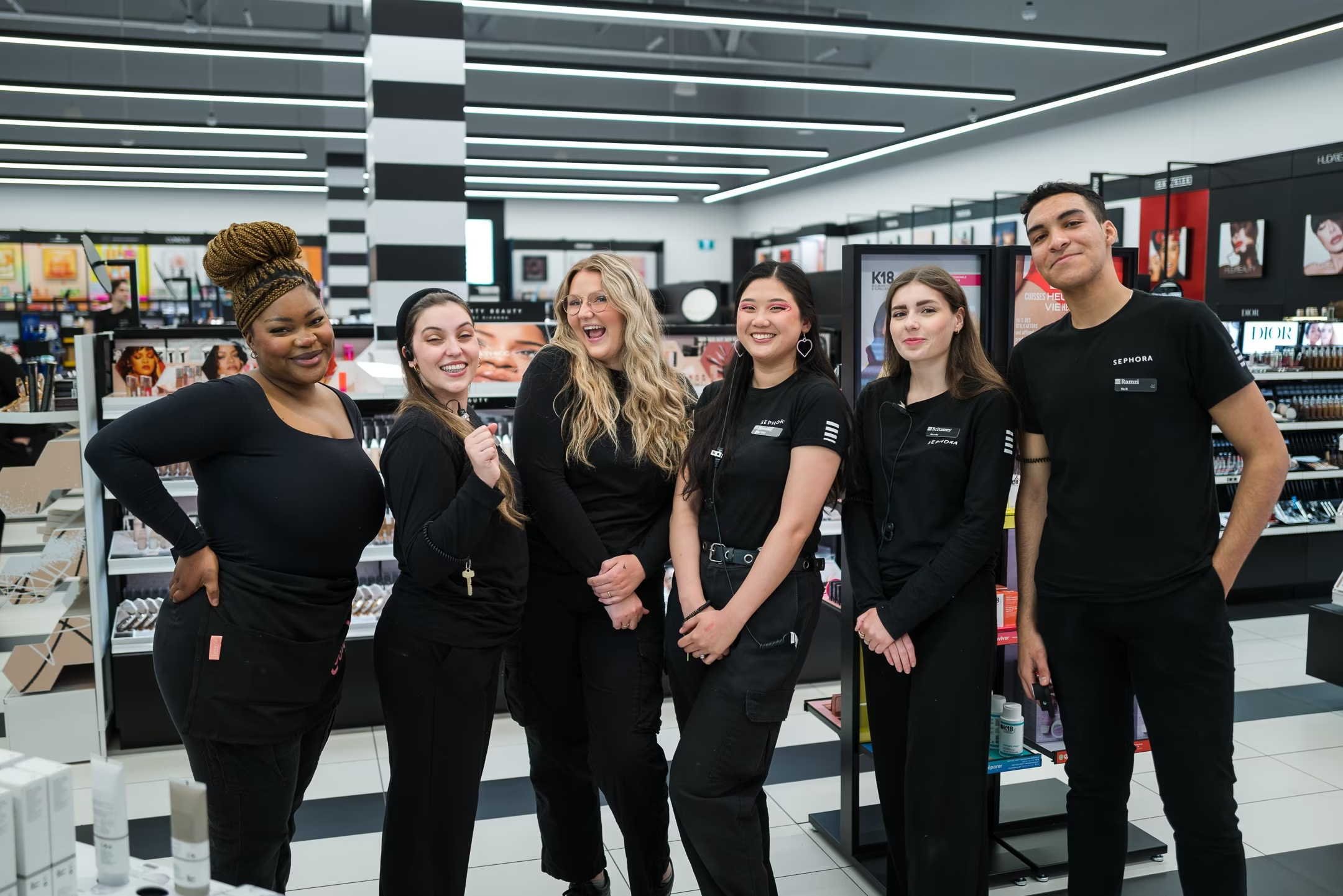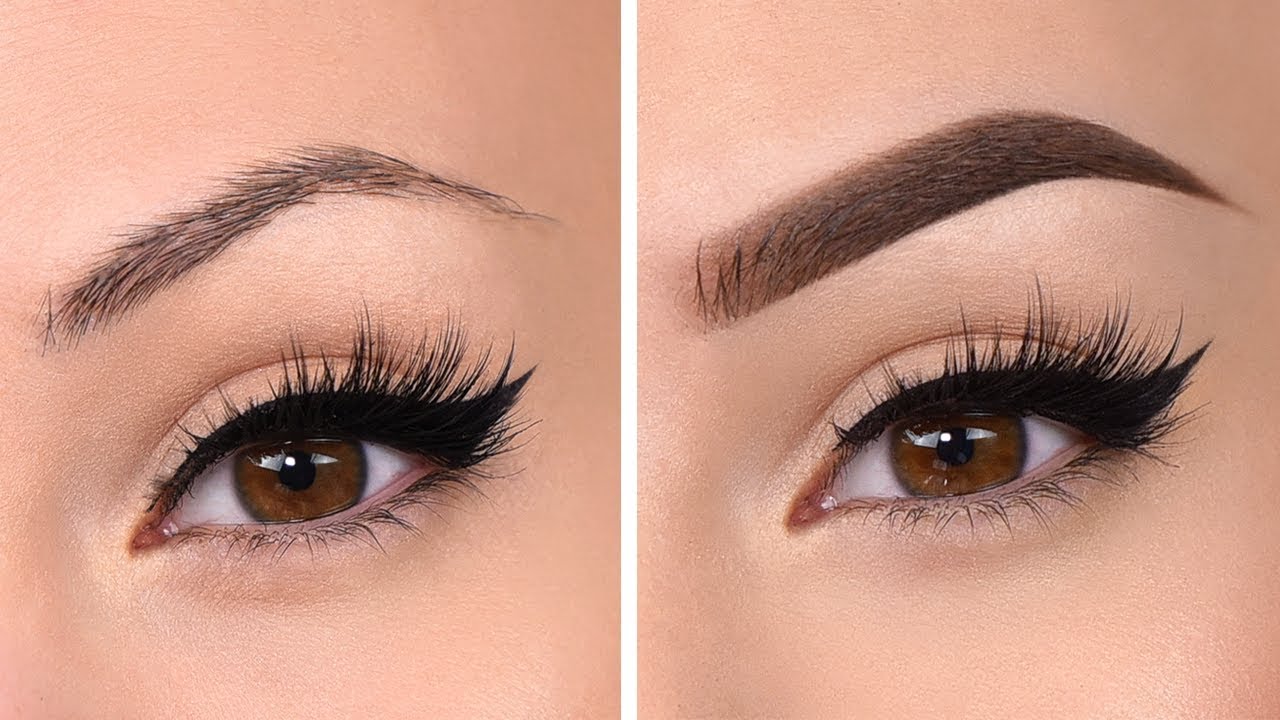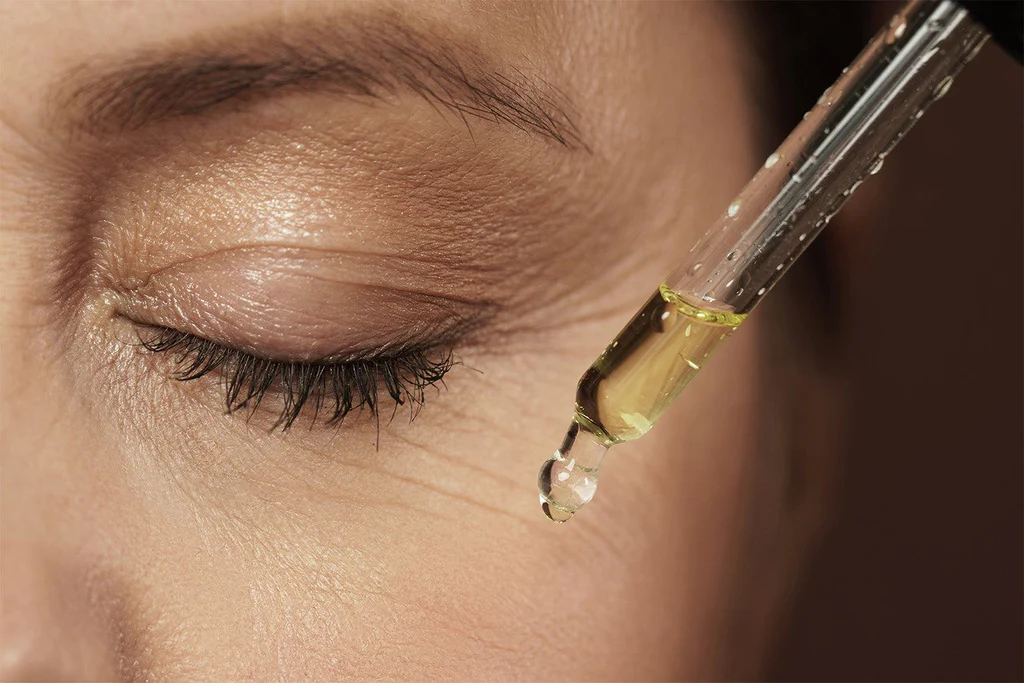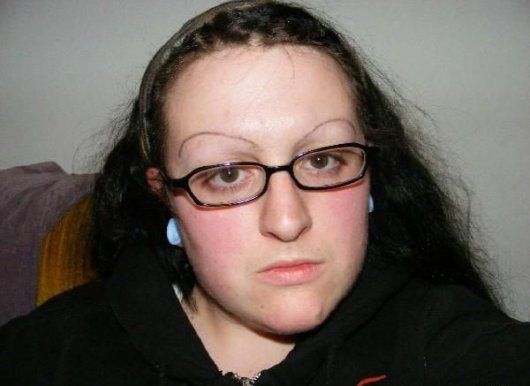Eyebrow and eyelash alopecia, also known as madarosis, is a condition that causes the loss of hair from the eyebrows or eyelashes. It can affect one or both sides of the face, and it can be either complete or partial. Eyebrow and eyelash alopecia can have various causes, ranging from skin irritation to autoimmune diseases. In this blog post, we will explain the function, anatomy, and life cycle of eyebrows and eyelashes, the possible causes and symptoms of eyebrow and eyelash alopecia, and the available treatments and prevention strategies.
Why are eyebrows and eyelashes important?
Eyebrows and eyelashes are not just cosmetic features, but they also have important functions for our eyes and facial expressions. Eyebrows protect the bones above our eyes and act like built-in sweatbands, preventing sweat from running down our forehead into our eyes. Eyelashes act like filters that protect our eyes from dust and other small pieces of debris. They also trigger our eye’s natural reflex to blink or close if they are disturbed. Additionally, eyebrows and eyelashes help us communicate our emotions and intentions by enhancing our facial expressions.
How do eyebrows and eyelashes grow?
Eyebrows and eyelashes are made of keratin, a protein that also forms our hair and nails. They grow from hair follicles, which are tiny sacs under the skin that contain the root of the hair. Each hair follicle has a growth cycle that consists of three phases: anagen, catagen, and telogen.
- Anagen is the active growth phase, during which the hair grows longer and thicker. This phase lasts for about 1 to 2 months for eyebrows and 1 to 6 months for eyelashes.
- Catagen is the transition phase, during which the hair stops growing and detaches from the blood supply. This phase lasts for about 2 to 3 weeks for both eyebrows and eyelashes.
- Telogen is the resting phase, during which the hair falls out and a new hair starts to grow from the same follicle. This phase lasts for about 3 to 4 months for eyebrows and 2 to 4 weeks for eyelashes.
At any given time, about 90% of our eyebrow and eyelash hairs are in the anagen phase, while the remaining 10% are in the catagen or telogen phase. This means that we normally lose a few hairs every day, which is normal and not a sign of alopecia. However, if we lose more hair than usual, or if the hair does not grow back, then we may have eyebrow and eyelash alopecia.
What are the causes of eyebrow and eyelash alopecia?
Eyebrow and eyelash alopecia can have many different causes, depending on whether it is scarring or non-scarring. Scarring alopecia means that the hair follicles are damaged or destroyed by inflammation, infection, trauma, or surgery, and the hair loss is permanent. Non-scarring alopecia means that the hair follicles are intact, but the hair growth is disrupted by hormonal, nutritional, genetic, or autoimmune factors, and the hair loss is usually reversible.
Some of the most common causes of eyebrow and eyelash alopecia are:
- Alopecia areata: This is an autoimmune disease that causes the immune system to attack the hair follicles, resulting in patchy hair loss on the scalp, eyebrows, eyelashes, and other parts of the body. The exact cause of alopecia areata is unknown, but it may be triggered by stress, infection, or genetic factors. Alopecia areata affects about 2% of the population, and it can occur at any age, but it is more common in children and young adults. Alopecia areata is usually non-scarring, and the hair may grow back spontaneously or with treatment, but it may also recur or progress to total hair loss (alopecia totalis) or body hair loss (alopecia universalis).
- Frontal fibrosing alopecia: This is a type of scarring alopecia that affects mainly postmenopausal women, and it causes the hairline to recede and the eyebrows to thin or disappear. The cause of frontal fibrosing alopecia is unknown, but it may be related to hormonal changes, genetic predisposition, or environmental factors. Frontal fibrosing alopecia is irreversible, and the hair does not grow back, but the progression of the condition can be slowed down with treatment.
- Tinea infection: This is a fungal infection that affects the skin and hair, and it can cause scaling, redness, itching, and hair loss on the affected area. Tinea infection can affect the scalp, eyebrows, eyelashes, or other parts of the body, depending on the type of fungus involved. Tinea infection is contagious, and it can be spread by direct contact with infected people, animals, or objects. Tinea infection is treatable with antifungal medications, and the hair usually grows back after the infection is cleared.
- Trichotillomania: This is a psychological disorder that causes people to pull out their own hair, either consciously or unconsciously, as a way of coping with stress, anxiety, or boredom. Trichotillomania can affect the scalp, eyebrows, eyelashes, or other parts of the body, and it can result in patchy or complete hair loss, as well as skin damage and infection. Trichotillomania is more common in children and adolescents, especially girls, and it may be associated with other mental health conditions, such as depression, obsessive-compulsive disorder, or attention-deficit hyperactivity disorder. Trichotillomania is treatable with behavioral therapy, medication, or a combination of both, and the hair may grow back if the hair-pulling habit is stopped.
- Hypothyroidism: This is a condition that occurs when the thyroid gland does not produce enough thyroid hormones, which regulate the metabolism and growth of the body. Hypothyroidism can cause various symptoms, such as fatigue, weight gain, cold intolerance, dry skin, brittle nails, and hair loss. Hypothyroidism can affect the scalp, eyebrows, eyelashes, or other parts of the body, and it can cause the hair to become thin, dry, and brittle. Hypothyroidism can be caused by autoimmune disease, iodine deficiency, medication, or surgery, and it can be diagnosed with blood tests. Hypothyroidism is treatable with thyroid hormone replacement therapy, and the hair may improve with treatment.
- Chemotherapy: This is a type of cancer treatment that uses drugs to kill cancer cells, but it can also affect normal cells, such as hair follicles. Chemotherapy can cause hair loss on the scalp, eyebrows, eyelashes, or other parts of the body, depending on the type and dose of the drugs used. Chemotherapy-induced hair loss is usually temporary, and the hair usually grows back after the treatment is completed or stopped. However, some drugs may cause permanent hair loss or changes in the hair texture or color.
Other possible causes of eyebrow and eyelash alopecia include:
- Aging: As we get older, our hair follicles become less active and produce less hair, resulting in thinning and graying of the hair. Aging-related hair loss can affect the scalp, eyebrows, eyelashes, or other parts of the body, and it is more noticeable in men than in women. Aging-related hair loss is irreversible, and the hair does not grow back, but it can be camouflaged with cosmetic products or procedures.
- Medications: Some medications can cause hair loss as a side effect, either by interfering with the hair growth cycle or by causing an allergic or toxic reaction. Some of the medications that can cause hair loss include anticoagulants, anticonvulsants, antidepressants, antithyroid drugs, beta-blockers, oral contraceptives, retinoids, and steroids. Medication-induced hair loss can affect the scalp, eyebrows, eyelashes, or other parts of the body, depending on the type and dose of the medication. Medication-induced hair loss is usually reversible, and the hair usually grows back after the medication is discontinued or changed.
- Nutritional deficiencies: A lack of adequate nutrients, such as protein, iron, zinc, biotin, or vitamin D, can affect the health and growth of the hair. Nutritional deficiencies can cause hair loss on the scalp, eyebrows, eyelashes, or other parts of the body, and they can also cause the hair to become dull, brittle, or break easily. Nutritional deficiencies can be caused by poor diet, malabsorption, eating disorders, or chronic diseases. Nutritional deficiencies can be diagnosed with blood tests, and they can be treated with dietary changes or supplements, and the hair may improve with treatment.
- Hormonal changes: Changes in the levels of hormones, such as estrogen, progesterone, testosterone, or cortisol, can affect the hair growth cycle and cause hair loss. Hormonal changes can occur during pregnancy, menopause, polycystic ovary syndrome, or Cushing’s syndrome, and they can cause hair loss on the scalp, eyebrows, eyelashes, or other parts of the body. Hormonal hair loss is usually reversible, and the hair usually grows back after the hormonal balance is restored with treatment or natural adjustment.
- Genetic disorders: Some genetic disorders can cause abnormal development or function of the hair follicles, resulting in hair loss or abnormal hair growth. Some of the genetic disorders that can cause hair loss include ectodermal dysplasia, hypotrichosis, monilethrix, and trichothiodystrophy.
What are the symptoms of eyebrow and eyelash alopecia?
The main symptom of eyebrow and eyelash alopecia is the loss of hair from the eyebrows or eyelashes, which can be gradual or sudden, partial or complete, and symmetrical or asymmetrical. The hair loss can affect the appearance and self-esteem of the person, as well as the function and protection of the eyes. Depending on the cause of the alopecia, there may be other symptoms, such as:
- Redness, swelling, itching, pain, or scarring of the skin around the eyebrows or eyelashes
- Changes in the texture, color, or shape of the eyebrows or eyelashes
- Changes in the growth rate, direction, or curliness of the eyebrows or eyelashes
- Inflammation, infection, or irritation of the eyes or eyelids
- Dryness, sensitivity, or discomfort of the eyes
- Changes in the vision or eye movements
- Changes in the body weight, temperature, or energy levels
- Changes in the menstrual cycle, fertility, or libido
- Changes in the mood, behavior, or cognition
If you notice any of these symptoms, you should consult your doctor or dermatologist for a proper diagnosis and treatment.
How is eyebrow and eyelash alopecia diagnosed?
To diagnose eyebrow and eyelash alopecia, your doctor or dermatologist will ask you about your medical history, family history, medications, allergies, diet, lifestyle, and hair care habits. They will also examine your scalp, eyebrows, eyelashes, and other parts of your body for signs of hair loss or other abnormalities. They may also perform some tests, such as:
- Blood tests: These can check for the levels of hormones, antibodies, iron, zinc, or other nutrients that may affect the hair growth.
- Skin biopsy: This involves taking a small sample of the skin from the affected area and examining it under a microscope for signs of inflammation, infection, or scarring.
- Hair analysis: This involves plucking a few hairs from the affected area and examining them under a microscope for signs of damage, breakage, or abnormal growth.
- Trichoscopy: This involves using a special device that magnifies the hair and skin and allows the doctor to see the details of the hair follicles, shafts, and roots.
- Culture or PCR: These can identify the type of fungus, bacteria, or virus that may cause the hair loss.
- Genetic testing: This can detect the presence of any genetic mutations or disorders that may cause the hair loss.
Based on the results of these tests, your doctor or dermatologist will determine the cause and type of your eyebrow and eyelash alopecia, and recommend the best treatment option for you.
How is eyebrow and eyelash alopecia treated?
The treatment of eyebrow and eyelash alopecia depends on the cause and type of the condition, as well as the severity and extent of the hair loss. The main goals of the treatment are to stop or slow down the hair loss, stimulate the hair growth, and improve the appearance and function of the eyebrows and eyelashes. Some of the possible treatment options are:
- Medications: These can be applied topically or taken orally, and they can target the underlying cause of the hair loss, such as inflammation, infection, hormonal imbalance, or immune system dysfunction. Some of the medications that can be used for eyebrow and eyelash alopecia include corticosteroids, minoxidil, antifungals, antibiotics, antihistamines, immunosuppressants, or thyroid hormones.
- Supplements: These can provide the essential nutrients, such as protein, iron, zinc, biotin, or vitamin D, that are needed for the health and growth of the hair. Supplements can be taken orally or applied topically, and they can be combined with other treatments or used as a preventive measure.
- Laser therapy: This involves using a low-level laser device that emits light energy to stimulate the blood circulation and cellular activity in the hair follicles, which can promote the hair growth and prevent the hair loss. Laser therapy can be done at home or in a clinic, and it can be used alone or in combination with other treatments.
- Platelet-rich plasma (PRP) therapy: This involves injecting the person’s own blood plasma, which is enriched with platelets and growth factors, into the scalp or the affected area, which can stimulate the healing and regeneration of the hair follicles, and enhance the hair growth and quality. PRP therapy can be done in a clinic, and it can be used alone or in combination with other treatments.
- Hair transplantation: This involves surgically moving hair follicles from one part of the body, usually the back or the sides of the scalp, to another part, such as the eyebrows or the eyelashes, where the hair is missing or thinning. Hair transplantation can restore the natural appearance and function of the eyebrows and eyelashes, and it can be done in a clinic or a hospital, under local or general anesthesia. Hair transplantation is usually reserved for cases of scarring alopecia or severe hair loss that do not respond to other treatments.
- Cosmetic procedures: These can improve the appearance and function of the eyebrows and eyelashes, and they can be temporary or permanent, depending on the person’s preference and budget. Some of the cosmetic procedures that can be used for eyebrow and eyelash alopecia include:
- Eyebrow or eyelash tinting: This involves applying a semi-permanent dye to the eyebrows or eyelashes, which can make them look darker, fuller, and more defined. Eyebrow or eyelash tinting can be done at home or in a salon, and it can last for a few weeks or months, depending on the type of dye and the frequency of washing.
- Eyebrow or eyelash extensions: This involves attaching synthetic or natural hair fibers to the existing eyebrows or eyelashes, which can make them look longer, thicker, and more voluminous. Eyebrow or eyelash extensions can be done in a salon, and they can last for a few weeks or months, depending on the type of glue and the care of the extensions.
- Eyebrow or eyelash shaping: This involves trimming, plucking, waxing, threading, or shaving the eyebrows or eyelashes, which can make them look neater, more symmetrical, and more suited to the person’s face shape and features. Eyebrow or eyelash shaping can be done at home or in a salon, and it can be repeated as often as needed, depending on the person’s hair growth rate and preference.
- Eyebrow or eyelash makeup: This involves applying cosmetic products, such as pencils, powders, gels, or mascaras, to the eyebrows or eyelashes, which can make them look more visible, more colorful, and more expressive. Eyebrow or eyelash makeup can be done at home or in a salon, and it can be removed with a makeup remover or a cleanser.
How can eyebrow and eyelash alopecia be prevented?
Some cases of eyebrow and eyelash alopecia cannot be prevented, especially if they are caused by genetic, autoimmune, or hormonal factors. However, some cases of eyebrow and eyelash alopecia can be prevented or reduced by following some simple tips, such as:
- Avoiding excessive or harsh manipulation of the eyebrows or eyelashes, such as rubbing, pulling, curling, or plucking, which can damage the hair follicles and cause the hair to fall out or break.
- Avoiding exposure to heat, chemicals, or radiation, such as hair dryers, curling irons, bleaches, dyes, or chemotherapy, which can weaken the hair shafts and cause the hair to fall out or break.
- Avoiding contact with allergens or irritants, such as cosmetics, perfumes, or pollutants, which can cause inflammation, infection, or irritation of the skin and hair follicles, and cause the hair to fall out or break.
- Maintaining a healthy and balanced diet, rich in protein, iron, zinc, biotin, and vitamin D, which can provide the necessary nutrients for the health and growth of the hair.
- Taking supplements, if needed, to correct any nutritional deficiencies that may affect the hair growth.
- Managing stress, anxiety, or boredom, which can trigger or worsen hair-pulling behaviors, such as trichotillomania, or cause hormonal imbalances that may affect the hair growth.
- Seeking medical help, if you notice any signs or symptoms of eyebrow and eyelash alopecia, such as excessive or unusual hair loss, changes in the hair quality or appearance, or other associated symptoms, such as skin problems, eye problems, or systemic problems. Early diagnosis and treatment can improve the prognosis and outcome of the condition.
FAQs
Here are some frequently asked questions about eyebrow and eyelash alopecia, and their answers.
- Q: Is eyebrow and eyelash alopecia contagious?
- A: No, eyebrow and eyelash alopecia is not contagious, unless it is caused by a fungal, bacterial, or viral infection, which can be transmitted by direct or indirect contact with the infected person, animal, or object. However, most cases of eyebrow and eyelash alopecia are not infectious, and they do not pose a risk to others.
- Q: Is eyebrow and eyelash alopecia hereditary?
- A: It depends on the cause of the alopecia. Some causes of eyebrow and eyelash alopecia, such as alopecia areata, frontal fibrosing alopecia, or genetic disorders, may have a genetic component or predisposition, which means that they can run in families or be inherited from the parents. However, other causes of eyebrow and eyelash alopecia, such as tinea infection, trichotillomania, or hypothyroidism, may not have a genetic link, and they can occur randomly or sporadically
- Q: Can eyebrow and eyelash alopecia be cured?
- A: It depends on the cause and type of the alopecia. Some cases of eyebrow and eyelash alopecia, such as those caused by infection, medication, or nutritional deficiency, can be cured with proper treatment and care, and the hair can grow back fully and normally. However, some cases of eyebrow and eyelash alopecia, such as those caused by scarring, genetic disorder, or autoimmune disease, may not have a cure, and the hair loss may be permanent or recurrent. In these cases, the treatment can only aim to slow down the progression, reduce the symptoms, and improve the appearance and function of the eyebrows and eyelashes.
- Q: How common is eyebrow and eyelash alopecia?
- A: The exact prevalence of eyebrow and eyelash alopecia is not known, as it is not a reportable condition, and it may be underdiagnosed or misdiagnosed. However, some studies have estimated that eyebrow and eyelash alopecia affects about 0.1% to 3.8% of the general population, and it is more common in women than in men, and in older people than in younger people. Eyebrow and eyelash alopecia can occur at any age, but it is more common in people over 40 years old.
- Q: How does eyebrow and eyelash alopecia affect the quality of life?
- A: Eyebrow and eyelash alopecia can have a significant impact on the quality of life of the affected person, as it can affect their physical, psychological, and social well-being. Physically, eyebrow and eyelash alopecia can cause discomfort, irritation, or infection of the eyes or eyelids, as well as changes in the vision or eye movements. Psychologically, eyebrow and eyelash alopecia can cause distress, anxiety, depression, low self-esteem, or poor body image, as the eyebrows and eyelashes are important for the facial appearance and expression. Socially, eyebrow and eyelash alopecia can cause embarrassment, isolation, or stigma, as the eyebrows and eyelashes are important for the communication and interaction with others. Therefore, it is important to seek professional help and support if you have eyebrow and eyelash alopecia, and to find ways to cope with the condition and its effects.

 By
Your Beauty Plug
By
Your Beauty Plug




